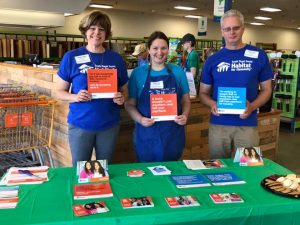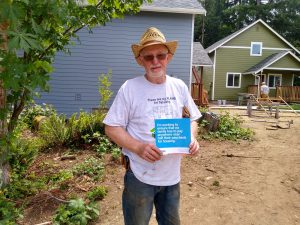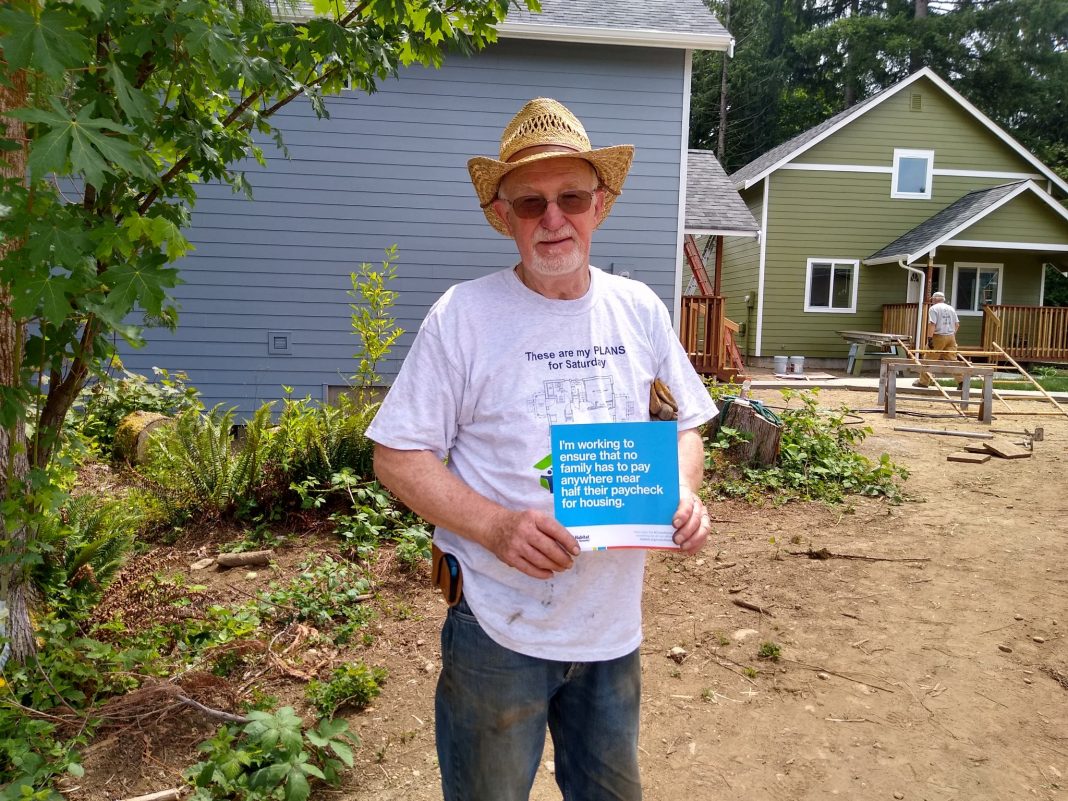In Washington State, one in eight families are paying more than half their income toward housing and that is not an isolated trend. To preserve affordable housing, Habitat for Humanity has just announced its Cost of Home campaign. A five-year plan, Cost of Home will advocate for affordable housing policy, work to create more affordable housing and cultivate neighborhoods with access to public resources.

Launched on June 12, Cost of Home is a national campaign that will be implemented by South Puget Sound Habitat for Humanity (SPSHFH). “Habitat affiliates across the country are using the power of our brand and the power of the collective organizations to push the conversation on housing a little bit more,” explains Carly Colgan, Executive Director of South Puget Sound Habitat for Humanity. “Our main goal is to educate and mobilize and to make policy changes on local, state and national levels.”
As a new campaign, Cost of Home’s first step is educating the public about the affordable housing crisis. As the campaign progresses, Habitat plans to introduce policy changes at state and national levels that will preserve affordable housing structures and enable the creation of new units.
Cost of Home originated from Habitat for Humanity International as a means to start a conversation on affordable housing. As an organization, Habitat realized housing isn’t always a widely discussed issue on a national level and they find it unacceptable that families are often forced to choose between paying for rent or paying for other necessities like food or healthcare. Utilizing the power of 1,400 national Habitat for Humanity affiliates, Habitat decided to use the Cost of Home campaign to tackle four key issues that can make rent insurmountable.
In the South Sound, Cost of Home is more relevant than ever, with over 10 percent of families in Washington State paying more than half of their income towards rent. As the population of Thurston County increases in the coming decades, the need for affordable housing is also growing.
According to Colgan, affordable housing used to be an issue that mostly affected low-income workers but has now trickled up to the middle class. Adult children of upper-class families are also beginning to see the effects of raised rental rates. “It’s becoming something that is affecting everyone,” says Colgan. “It’s affecting having qualified people moving here for jobs and not having places to live. So, there are different aspects of it.”
A Home for Everyone

Photo courtesy: South Puget Sound Habitat for Humanity
The first pillar of Cost of Home is the supply and preservation of affordable homes. This pillar tackles maintaining reasonably priced units as well as creating more affordable properties. “There’s obviously a supply issue in that we don’t have enough homes in general regardless of affordability, but affordable homes is in there also,” explains Colgan.
Land use is another aspect of the campaign. Between zoning and the cost of land, SPSHFH is also going to use this campaign to explore the feasibility and affordability of constructing new affordable housing units on Thurston County land. “One of our biggest challenges in building here in Thurston County is the high price of land,” says Colgan.
Exploring equitable credit and predatory lending is the third piece of Cost of Home. Because Habitat for Humanity originates mortgages and services mortgages, they are involved in the finances of low-income earners, and notice a history of payday loans and high interest credit cards amongst them. “Those are the kind of things you can get sucked into and can’t get out of,” explains Colgan. “So, there’s an education aspect to it. But at the same time, there’s some policy pieces that can be changed.”
The last pillar of Cost of Home is cultivating neighborhoods. Communities where neighbors know each other’s name and homes that are near public services like bus lines and schools. “Access to communities of opportunity,” says Colgan. “So, how do we feel comfortable in the communities that we live in? How do we make sure everyone has equitable access to transit and to different pieces of the education system?”
Particularly in Thurston County, South Puget Sound Habitat for Humanity is planning on focusing on the first pillar: increasing the amount of affordable housing available. Home ownership is an important part of the SPSHFH mission, but Habitat also wants to reach out to other organizations to increase the number of affordable rentals in the area.
“We’re here to move the needle on housing, not just home ownership,” explains Colgan. “We’re here to work with people who provide affordable rentals, because those renters are then able to save up the money to become homeowners and be the ones who end up in our programs. By working on the rental piece of things, we’re essentially creating that system to where eventually they will become homeowners.”
To learn about Habitat for Humanity and the Cost of Home campaign, visit the Habitat for Humanity website. Updates can also be found on the South Puget Sound Habitat for Humanity Facebook page.
Sponsored

















































